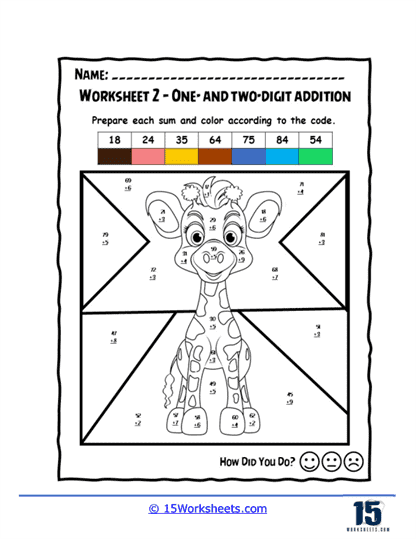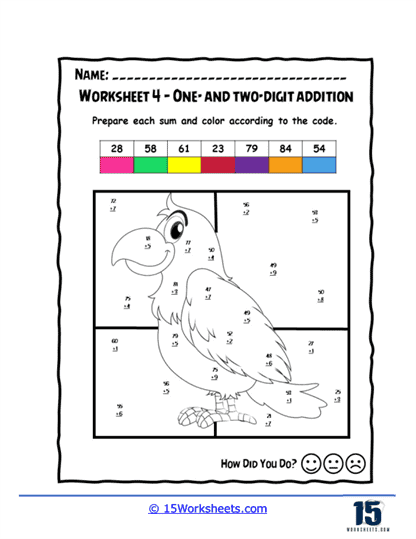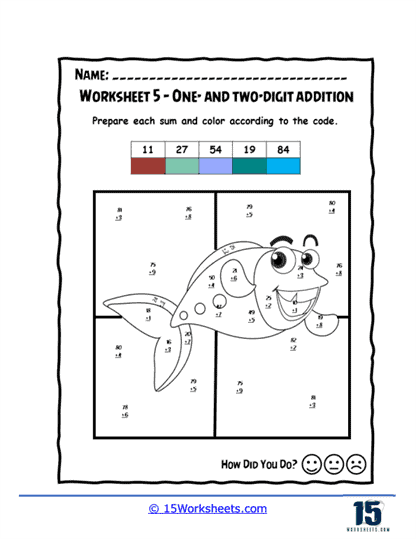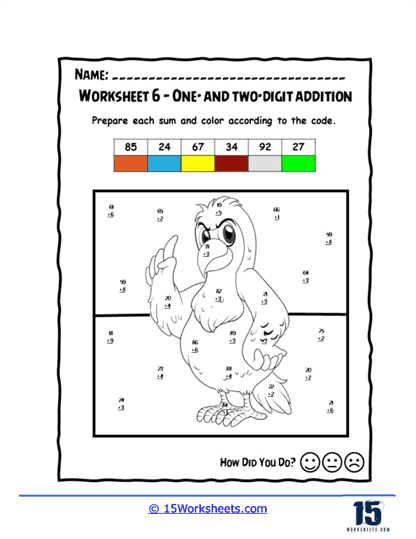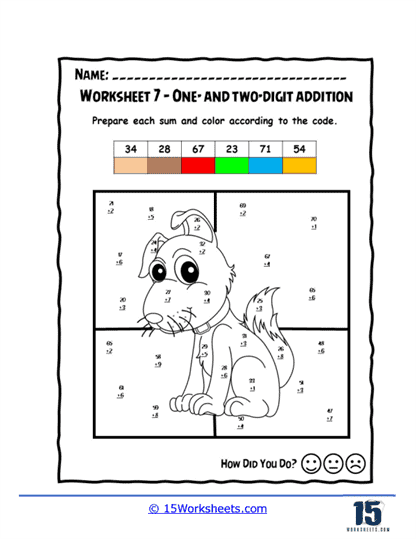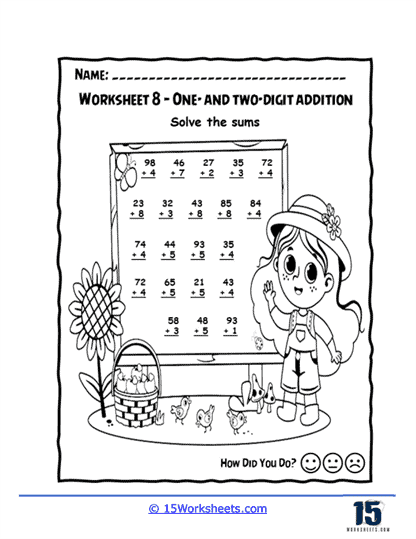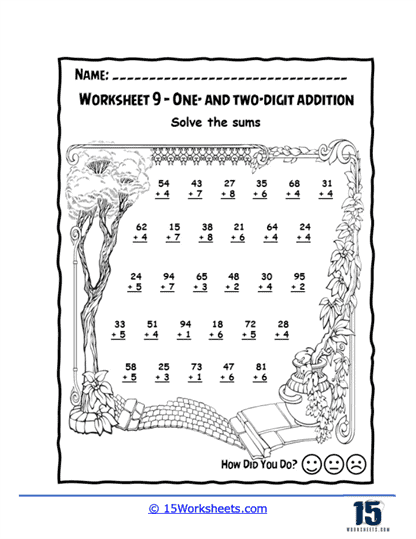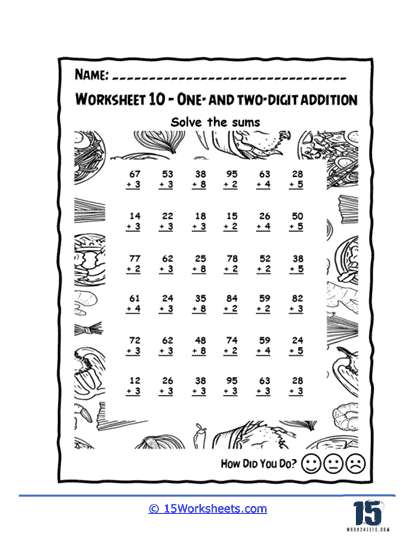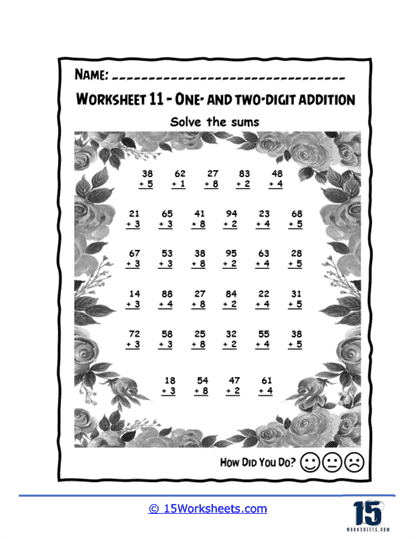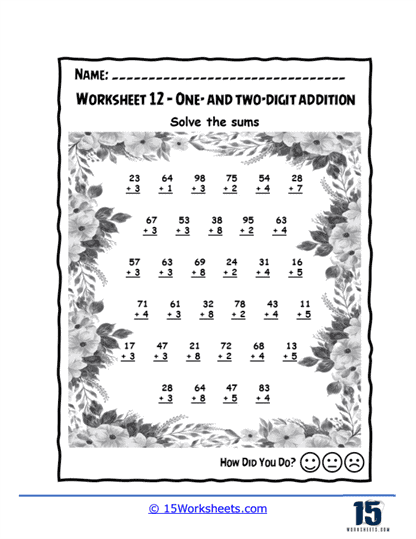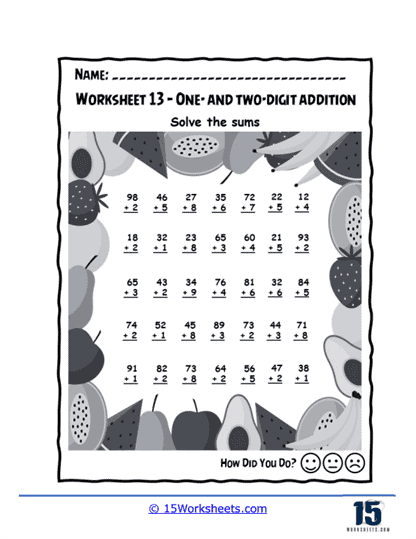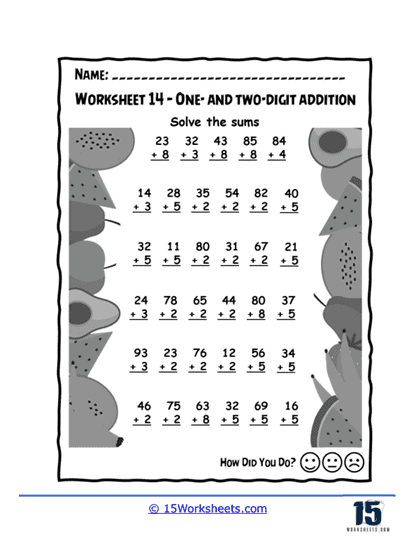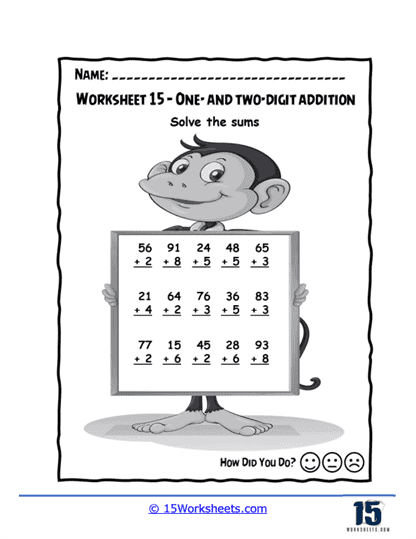Single and Double Digit Addition Worksheets
About These 15 Worksheets
These worksheets were put together to reinforce and improve students’ skills in performing addition operations involving one and two-digit numbers. These worksheets are foundational in the realm of mathematics education, catering primarily to early elementary students who are just beginning to grasp the concepts of addition and numerical manipulation. Through a variety of exercises, these worksheets aim to build confidence, accuracy, and speed in basic addition, setting the stage for more complex arithmetic operations in the future. The practice provided by these worksheets is crucial for developing a strong mathematical foundation, enhancing problem-solving abilities, and fostering a positive attitude towards mathematics.
Types of Exercises
Straightforward Addition Problems – The most basic form involves direct addition questions where students simply add two numbers together. These can range from adding single-digit numbers to adding two double-digit numbers, possibly with or without regrouping. Addition problems may be presented in both horizontal (side by side) and vertical (one on top of the other) formats. The vertical format particularly emphasizes the concept of place value and is essential for practicing regrouping.
Fill-in-the-Blank Exercises – These exercises present equations with a missing addend or sum, challenging students to deduce the missing number. This type of problem encourages reverse thinking and reinforces the relationship between addition and subtraction. To improve speed and fluency in addition, some worksheets are designed as timed drills where students aim to complete as many problems as possible within a set timeframe. This practice helps build automaticity in recalling addition facts.
Matching Games – Some worksheets include matching exercises where students must connect addition problems to their correct sums. This interactive format is engaging and helps reinforce memory and recognition of addition facts. Worksheets may feature puzzles where a series of addition operations lead to a final answer. These exercises are enjoyable and motivate students to work through multiple steps, promoting endurance in problem-solving.
Color by Number – Addition problems can be integrated into art activities where each sum corresponds to a specific color. Completing the exercise correctly reveals a hidden picture, making learning fun and visually appealing. For a hands-on approach, worksheets might include cut-out problems that students need to solve and then paste onto the correct answer. This tactile method supports active learning and engagement.
Place Value Emphasis – Some worksheets specifically design problems to reinforce the concept of place value in addition, such as adding numbers with zeros in certain places or focusing on the addition of numbers in the tens place. Specifically for double-digit addition (and beyond), worksheets focus on teaching and practicing regrouping (or carrying over). These exercises are crucial for understanding how to handle sums exceeding 9 in any given place value.
The Benefits of These Worksheets
Enhanced Understanding of Basic Math Concepts – Regular practice with these worksheets deepens students’ understanding of addition and the base-ten number system, crucial elements of mathematical literacy. As students encounter a variety of problem types, they develop versatile problem-solving strategies, learning to approach mathematical challenges from different angles. Through repetition and practice, students become more accurate and efficient in performing addition operations, reducing errors and increasing speed.
Strengthened Number Sense – Engaging with these worksheets helps students develop a strong number sense, including an intuitive understanding of number relationships and place value. Mastery of single and double-digit addition lays the groundwork for more complex arithmetic operations, such as subtraction with borrowing, multiplication, and division. Success in completing these worksheets builds students’ confidence in their mathematical abilities, encouraging a more positive attitude towards math and learning in general.
Foundation for Financial Literacy – Basic addition skills are essential for understanding money and financial transactions, making these worksheets indirectly supportive of practical life skills.
Through a wide range of exercises, they cater to diverse learning styles and needs, ensuring that students not only learn how to add numbers but also understand the underlying mathematical concepts. The practice provided by these worksheets enhances problem-solving abilities, builds confidence, and lays a solid foundation for future mathematical learning. By engaging with these exercises regularly, students can significantly improve their addition skills, setting themselves up for success in mathematics and beyond.


